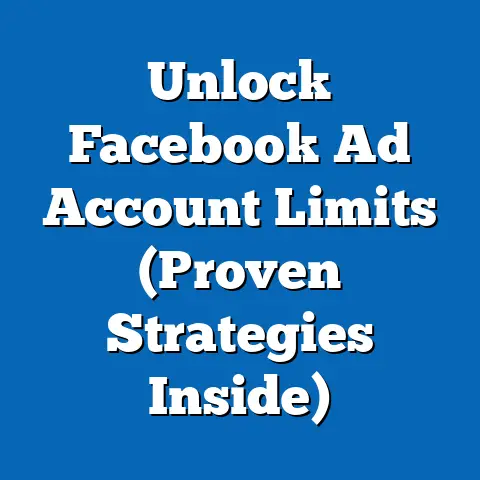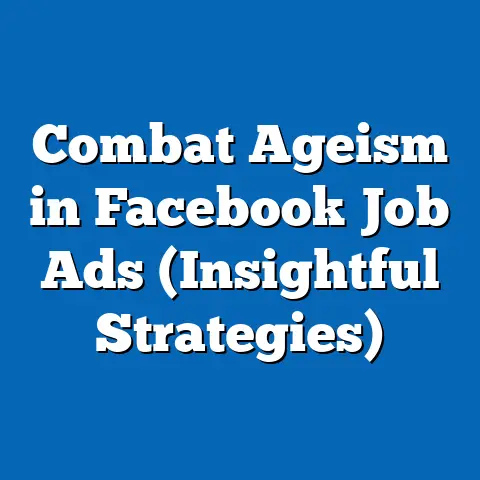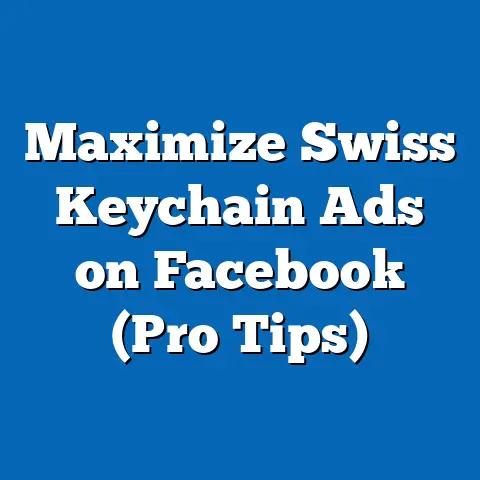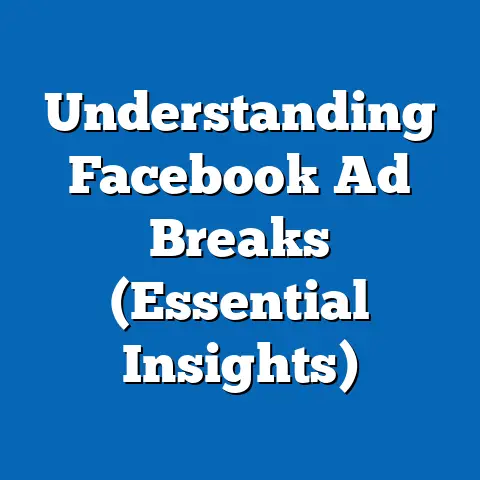Craft Compelling Video Facebook Ads (Expert Strategies Unveiled)
In today’s digital world, first impressions are everything, especially on a platform like Facebook where users are constantly bombarded with content. If your video ad doesn’t grab attention within the first few seconds, it’s likely to be scrolled past. That’s why aesthetics – the visual appeal, the color theory, the composition – are absolutely crucial for creating compelling video ads. I’ve seen firsthand how a visually stunning ad can outperform a technically sound one, simply because it resonated more with the viewer.
This article isn’t just about making pretty videos. It’s about unveiling expert strategies to create video Facebook ads that not only catch the eye but also convert viewers into loyal customers. I’ll guide you through understanding your audience, crafting a strong visual identity, mastering the art of storytelling, and leveraging the latest trends to create video ads that truly stand out. Let’s dive in!
1. Understanding Your Audience
Before you even think about colors or fonts, you need to deeply understand your audience. Think of it like this: you wouldn’t decorate a teenager’s room the same way you’d decorate a retiree’s living room, right? The same principle applies to video ads.
Understanding your target market’s preferences, behaviors, and pain points is essential. This knowledge will directly influence the aesthetics and messaging of your video ads. For instance, if you’re targeting a younger audience, you might lean towards vibrant colors, fast-paced editing, and trendy music. On the other hand, an older demographic might appreciate a more sophisticated and calming aesthetic.
Here are some tools and strategies I use for audience research:
- Facebook Audience Insights: This free tool provides valuable demographic data, interests, and behaviors of your target audience on Facebook. I often use this to refine my targeting and understand what resonates with different segments.
- Surveys: Don’t underestimate the power of directly asking your audience what they want! Simple surveys can provide invaluable insights into their preferences and pain points.
- Competitor Analysis: What are your competitors doing? Analyze their video ads to see what’s working for them and what’s not. This can give you clues about what your target audience responds to.
- Creating Audience Personas: This involves creating detailed profiles of your ideal customers, including their demographics, interests, motivations, and pain points. These personas serve as a guide when making creative decisions.
Takeaway: Don’t just guess what your audience wants. Do the research, create audience personas, and let that knowledge guide your video ad creation process. It’s the foundation for everything else.
2. Crafting a Strong Visual Identity
A cohesive visual identity is crucial for building brand recognition and trust. Think of brands like Coca-Cola or Apple – you instantly recognize them, even without seeing their logo, because of their consistent visual style. The same should be true for your video ads.
Elements of a strong visual identity include:
- Brand Colors: Choose a color palette that represents your brand and consistently use it in your video ads. Consider the psychological effects of colors. For example, blue often conveys trust and stability, while red can evoke excitement and energy.
- Fonts: Select fonts that are legible and reflect your brand’s personality. Use them consistently across all your video ads.
- Logos: Make sure your logo is clearly visible, but not overpowering, in your video ads.
I’ve seen firsthand how consistent visual branding can increase brand recall. In one project, we helped a local bakery rebrand and create a consistent visual style for their video ads. Within a few months, their brand recognition increased significantly, and they saw a noticeable bump in sales.
Takeaway: Develop a strong visual identity for your brand and consistently apply it across all your video ads. This will help build brand recognition, trust, and ultimately, drive conversions.
3. The Power of Storytelling in Video Ads
People love stories. A compelling narrative can engage viewers on an emotional level and make your ad memorable. Think about it: how many ads do you actually remember? The ones that tell a story are the ones that stick with you.
Key components of effective storytelling include:
- A Relatable Protagonist: Viewers need to be able to connect with the main character of your story.
- A Clear Conflict: Every good story has a conflict that needs to be resolved. This creates tension and keeps viewers engaged.
- A Resolution: The resolution provides a satisfying conclusion to the story.
The aesthetics of your video can enhance the storytelling. For example:
- Visuals: Use visuals that support the narrative and evoke the right emotions.
- Sound: Music and sound effects can create atmosphere and enhance the emotional impact of the story.
- Pacing: The pace of your video can influence the tension and excitement of the story.
I remember working on a video ad for a non-profit organization that provided clean water to communities in developing countries. Instead of just showing statistics, we told the story of a young girl whose life was transformed by access to clean water. The video was incredibly powerful and generated a significant increase in donations.
Takeaway: Don’t just sell a product or service. Tell a story that resonates with your audience. Use the aesthetics of your video to enhance the narrative and create an emotional connection.
4. Technical Aspects of Video Production
Even the most compelling story can fall flat if the technical aspects of your video are subpar. High-resolution visuals, clear sound, and professional editing are essential for creating a polished and engaging video ad.
Here are some key technical considerations:
- High-Resolution Visuals: Use high-quality footage and graphics. Blurry or pixelated visuals will turn viewers off.
- Sound Quality: Ensure that your audio is clear and free of background noise. Invest in a good microphone.
- Editing Techniques: Use professional editing software to create a smooth and engaging video. Pay attention to pacing, transitions, and color correction.
Facebook also has specific requirements for video ads:
- Aspect Ratios: Use the correct aspect ratio for each placement. Square (1:1) and vertical (9:16) videos tend to perform well on mobile.
- Length: Keep your videos short and to the point. Attention spans are short on social media. I generally aim for 15-30 seconds for most ads.
- Captions: Add captions to your videos, as many people watch videos with the sound off.
I once worked with a client who insisted on using low-resolution footage for their video ads. Despite having a great product and a compelling story, their ads consistently underperformed. Once they upgraded to high-resolution visuals, their engagement rates skyrocketed.
Takeaway: Don’t skimp on the technical aspects of video production. Invest in high-quality equipment and software, and optimize your videos for Facebook’s platform. These technical elements can significantly enhance viewer engagement and retention.
5. Leveraging Trends and Innovations
The world of video advertising is constantly evolving. New trends and innovations emerge all the time, and it’s important to stay ahead of the curve.
Some current trends and innovations include:
- Short-Form Video Content: Platforms like TikTok have popularized short-form video content. Consider creating shorter, more engaging video ads that are optimized for mobile viewing.
- Interactive Ads: Interactive ads allow viewers to engage with your video content. This can include polls, quizzes, and clickable elements.
- Augmented Reality (AR) Features: AR features allow viewers to experience your product or service in a more immersive way. For example, a furniture company could allow viewers to see how a piece of furniture would look in their home using AR.
I’ve experimented with interactive ads and have seen great results. One campaign involved a quiz that helped viewers determine which of our client’s products was best suited for their needs. The quiz generated a significant number of leads and increased engagement.
Takeaway: Stay up-to-date on the latest trends and innovations in video advertising. Experiment with new formats and features to see what works best for your audience.
6. Analyzing Performance and Iterating
Creating compelling video ads is an ongoing process. It’s not enough to just create a video and launch it. You need to track its performance, analyze the data, and make adjustments as needed.
Key performance indicators (KPIs) to track include:
- View Rates: How many people are watching your video?
- Engagement: How are people interacting with your video (likes, comments, shares)?
- Conversion Rates: How many people are taking the desired action after watching your video (e.g., visiting your website, making a purchase)?
Use Facebook Ads Manager and other analytics tools to gather data and insights. Look for patterns and trends in your data. What’s working? What’s not?
I always emphasize the importance of continuous iteration. No ad is perfect right out of the gate. By constantly testing and refining your video ads, you can significantly improve their performance over time.
Takeaway: Performance analysis is crucial for refining your video ads. Track your KPIs, analyze the data, and make adjustments as needed. Continuous iteration and testing are key to maximizing the effectiveness of your video ads.
Conclusion
Aesthetics are paramount in crafting compelling video Facebook ads. By understanding your audience, crafting a strong visual identity, mastering the art of storytelling, leveraging the latest trends, and continuously analyzing performance, you can create video ads that not only attract attention but also drive measurable results.
Don’t be afraid to experiment, test new ideas, and push the boundaries of what’s possible. With a little creativity and a lot of hard work, you can transform your video ad campaigns and achieve your marketing goals.





